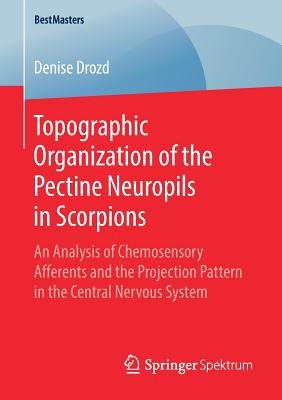
- We will send in 10–14 business days.
- Author: Denise Drozd
- Publisher: Springer Spektrum
- ISBN-10: 3658251549
- ISBN-13: 9783658251543
- Format: 14.8 x 21 x 0.3 cm, minkšti viršeliai
- Language: English
- SAVE -10% with code: EXTRA
Topographic Organization of the Pectine Neuropils in Scorpions (e-book) (used book) | bookbook.eu
Reviews
Description
Chelicerates do not possess dedicated antennae like the Mandibulata but have evolved their second sets of appendages into the eponymous chelicerae. In scorpions, pectines are specialized comb-like structures, located on the ninth body segment, used for examining the substrate for chemo- and mechanosensory signals. The comb teeth, or pegs, are truncated beveled structures facing the substrate for probing, and are studded with numerous sensory receptors. Afferents from the pectines project into a distinct neuropil of the central nervous system, located behind the fourth walking leg neuropils. Denise Drozd analyzes afferents of single pegs in Mesobuthus eupeus by backfilling, combined with immunohistological labeling of neuropil regions. Her results suggest a topographic representation of the chemosensory fibers within the pectine neuropil instead of the typical chemotopic representation.
EXTRA 10 % discount with code: EXTRA
The promotion ends in 22d.04:31:30
The discount code is valid when purchasing from 10 €. Discounts do not stack.
- Author: Denise Drozd
- Publisher: Springer Spektrum
- ISBN-10: 3658251549
- ISBN-13: 9783658251543
- Format: 14.8 x 21 x 0.3 cm, minkšti viršeliai
- Language: English English
Chelicerates do not possess dedicated antennae like the Mandibulata but have evolved their second sets of appendages into the eponymous chelicerae. In scorpions, pectines are specialized comb-like structures, located on the ninth body segment, used for examining the substrate for chemo- and mechanosensory signals. The comb teeth, or pegs, are truncated beveled structures facing the substrate for probing, and are studded with numerous sensory receptors. Afferents from the pectines project into a distinct neuropil of the central nervous system, located behind the fourth walking leg neuropils. Denise Drozd analyzes afferents of single pegs in Mesobuthus eupeus by backfilling, combined with immunohistological labeling of neuropil regions. Her results suggest a topographic representation of the chemosensory fibers within the pectine neuropil instead of the typical chemotopic representation.


Reviews